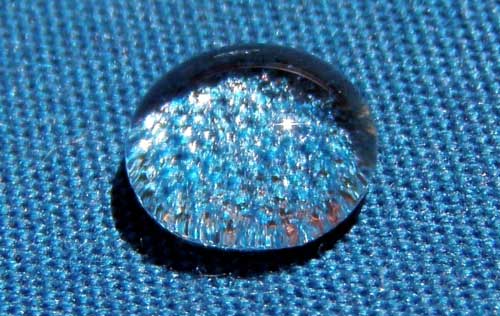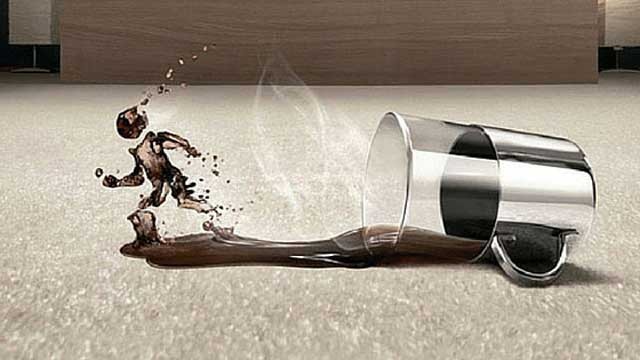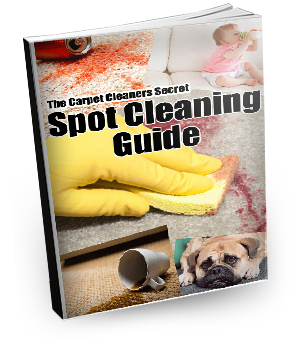So what exactly is carpet stain protection treatment and how does it work?
Believe it or not this is NOT a question that most customers ask. Usually the only concerns are, how much does it cost, and how long will it last.
Now considering the cost and that this is a chemical treatment applied after cleaning. I would have thought it would be important to know:
- What it is?
- How does it work?
- What does it actually protect against?
Oh, and of course lets not forget…
- Does the treatment have any adverse health implications to me, my family or pets?
I’ll be answering these kinds of questions and others in this article. The aim being to give you a complete understanding of carpet stain protection treatment.
So lets take a look at 5 things you should know about these treatments.
1. What is carpet stain protection treatment and how does it work?
Carpet stain protection treatments come under a variety of brand names. The most popular ones include:
These products provide a protective shield that surround the fibers of fabrics. They are mainly used on carpets and upholstery and consist of 2 types:
- Mill applied – The protection is “Baked” into the fibers during the manufacturing process. Generally solvent based and harder wearing.
- Post cleaning – Applied to carpets or upholstery after cleaning or when brand new. Generally water based and applied with a hand sprayer. Tends to wear off faster than the mill applied product.
Both of these methods of application protect the fibers from water and oil based stains and soils.

These protection treatments work by:
- Coating the outside of the fibers and making it hard for particles to stick to them.
- Blocking the minute cracks or pores in the fibers with stain blockers. This prevents absorption of liquids and soils into the fiber itself.
Because the coating is liquid repellent, it makes it easier to remove oil and water based spills. Solid particles can’t stick to the fibers either which makes them easier to vacuum out.
This means they don’t remain in the carpet to act as an abrasive or work their way into the fibers themselves. This is the cause of the dark tracking lane buildup and wear and tear often seen in carpets.
These 2 factors are a major cause of poor carpet appearance.
2. Will it make my carpets or upholstery completely stain resistant.
The short answer to this is no!
None of these carpet stain protection treatments give 100% protection from staining. Turmeric and pet urine stains are just 2 examples where these treatments fail to protect.
The degree of protection also depends on the type applied to the carpet or upholstery as well.
The majority of carpets & upholstery these days have a basic form of stain protection. This protects against oil buildup penetrating the fabric and tracking lane formation in carpets.
They will still stain if there are spills on them. But at least buy you some time and a chance of removal should there be an accident.
The next level of carpet protection brings us to products like Duponts Stainmaster carpets. These contain compounds known as stain blockers.
Nylon and wool carpets are the fabrics treated with these chemicals. In the case of nylon they block up the small cracks in the fibers. In wool its the pores. These cracks and pores are the dye sites for the carpet coloring process.
As an example, with a light colored nylon carpet, the majority of these cracks aren’t filled with dye. They are open and susceptible to minute soil particles and oil to get into them.
This is what causes traffic lane marks in untreated nylon carpet and dark areas on upholstery.
To prevent this, stain blockers are applied in the manufacturing process. These fill up these dye sites making it impossible for anything to penetrate the fiber.
Carpet or upholstery claiming stain resistance generally have this treatment applied. They also have the standard protection as well. This creates a non stick surface around the fibers to enable easier vacuuming.
These types of treated fabrics are a lot more durable and maintain their appearance a lot longer.
3. Is carpet & upholstery stain protection treatment safe?
In 1999, 3M Corporation released data about the chemicals in their product Scotchgard. Perfluorooctanoic Acid (PFOA) and perfluorooctane sulfonate (PFOS) were showing up in the environment.
They were showing up in Tap water, Human blood, dolphins, polar bears and even penguins.
Unfortunately PFOA and PFOS do not decompose in nature. This means that once they are there, they remain potential threat for a long time.
High dosages of these chemicals tested on lab rats caused certain cancers and also death.
Lower dosages showed increases in developmental problems in humans and animals as well.
So based on these findings in 2000, 3M announced they were discontinuing Scotchgard production. They then set about finding a substitute formulation. The “new” Scotchgard contains perofluorobutane sulfante (PFBS).
According to 3M and Federal EPA guidelines PFBS isn’t toxic. They claim it doesn’t persist in the environment and leaves the bloodstream quickly. Unlike the previous chemicals.
I can’t give an opinion as to whether or not these products are truly safe. 3M and the EPA claim they are and they are certainly beneficial when applied to fabrics, upholstery and carpet.
Like anything if you are unsure make sure you do your own due-diligence. You can find plenty more information about Scotchgard here.
4. How long does fabric protection treatment last?
Mill applied fabric protection (applied during the manufacturing process) lasts about 5 years. This is of course based on a normal wear and tear pattern
Protection applied after cleaning or onto a brand new product lasts about 2 years.
Regular vacuuming also increases the life of the protection and the protected item. This is because it minimizes the abrasive effects of soils wearing the coating away.
Hot water extraction cleaning will also have less of an impact on the mill applied protection as well. This is because it is solvent based and “baked” into the product during manufacture.
Protection that is post-applied needs to applied again after cleaning. This is because it is a water based and not as durable as the mill applied product.
It is recommended that a “top up” be applied even to the mill applied product after it has been professionally cleaned.
5. Are there any products that fabric protection shouldn’t be used on?
Yes, fabric protection is not effective on certain fabrics, these include:
- Polyproplylene
- Acrylics
- White wool rugs
- Oriental rugs
- Non color fast rugs and upholstery fabrics
- Dry clean only items
Before applying carpet & upholstery fabric protection, test on an inconspicuous area first. There are many fabrics that do not react well to moisture so it always pays to check first.
6. Can I apply the product myself?
Yes you can. Products like Scotchgard are available in most supermarkets. Carpet and upholstery retailers also carry various brands as well.
An important point I’d like to make here, is…
Make sure you read the application instructions carefully!
Wear a respirator mask with a good filter and apply the product in an area with good ventilation. Avoid getting over spray on other furniture or hard flooring. If you, do make sure you clean it up while still wet.
You have to bear in mind this is a product that repels moisture once it has cured. If you don’t clean up any over spray and it dries, it can be difficult to remove.
You may find it’s easier and cheaper to get a professional to apply your fabric protection for you. There are several good reasons for using a professional carpet & upholstery cleaning service:
- They have the best equipment for the job
- Experience and the knowledge of any potential problems before they arise.
- Much cheaper than getting the product applied in-store. You also get to see that it is being properly applied and get to ask any questions about the product.
- If there is a problem they are liable. If you apply it yourself and something goes wrong, you’ll have to foot any damage yourself.
- Less risk to your own health from breathing the product in during application.
7. Will getting my carpets & upholstery cleaned remove my fabric protection treatment?
As long as the correct cleaning method and chemicals are used then no it shouldn’t. But stripping out of the fabric protection is a common problem.
It is almost always due to the use of harsh alkaline cleaning chemicals.
We quite often see this occur for 2 reasons:
- People get the cheapest cleaning service they can. This is fraught with danger because cheap means quick usually. The operator will use harsh cleaning agents to shortcut the cleaning process.
- People attempt to clean their carpets & upholstery themselves. When they find the dirt is hard to remove because they are using inferior equipment. The first thing they reach for is the strongest cleaning agent they can find.
This is why it pays to use the services of a well educated carpet & upholstery cleaning professional.
Conclusion
Customers often question whether carpet stain protection treatment is worthwhile.
As a professional carpet & upholstery cleaner in the business for over 20 years, I know it is. I have seen the results of the wear and tear on treated and untreated fabrics many times over the years.
There has always been a noticeable difference in the appearance and longevity between them.
I hope that reading this article has now given you all the information you need on this subject. It’s important to understand how the product works and what it does before making a decision.
Especially when it’s not a cheap product to have applied. You need to be sure that what you are doing is right for you and your circumstances.
Have you had any experiences good or bad with stain protection treatements? I’d really love to hear your views and comments



Comments on this entry are closed.